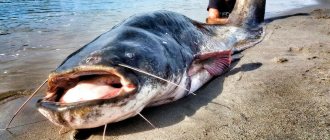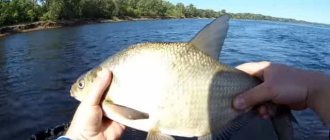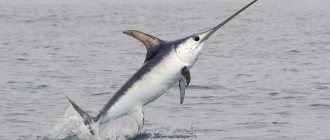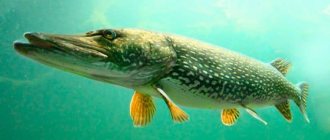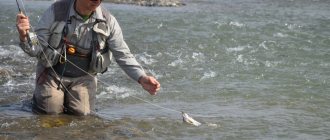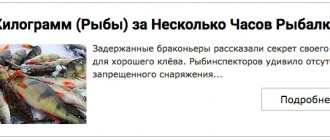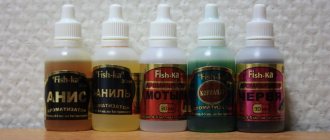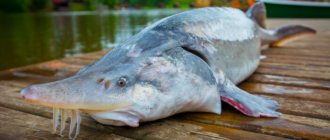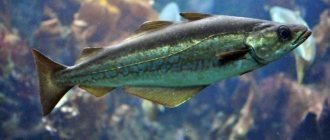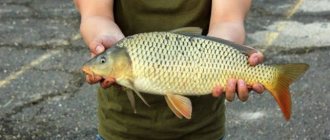Tips for catching trophy specimens
Anglers who are deliberately going to catch large bream are better off coming to the reservoir after sunset.
At night, bream leave their daytime stops and, in search of food, go to shallow coastal waters, where depths are no more than 2 m. For night fishing, it is better to use a float rod with a blind rig. The float rod is equipped with a thick monofilament line with a breaking load of 8–10 kg and a hook No. 8–6 (according to the international classification). To ensure that fish bites do not go unnoticed, you will need to put a firefly on the float antenna before fishing. Important! In trophy bream fishing, special attention should be paid to feeding the selected place
Since we are talking about catching very cautious fish, you need to feed the point several hours before the start of fishing. Pre-feeding should consist of a coarse bait mixture mixed with heavy soil. It is necessary to add cut worms to the mixture, which will be the main feed component and will quickly attract fish with their specific smell
For a complete feeding it will be enough:
Pre-feeding should consist of a coarse groundbait mixture mixed with heavy soil. It is necessary to add chopped worms to the mixture, which will be the main feed component and will quickly attract fish with their specific smell. For a complete feeding it will be enough:
Since we are talking about catching very cautious fish, you need to feed the point several hours before the start of fishing. Pre-feeding should consist of a coarse groundbait mixture mixed with heavy soil
It is necessary to add chopped worms to the mixture, which will be the main feed component and will quickly attract fish with their specific smell. For a complete feeding it will be enough:
- 1 kg of bait mixture;
- 2 kg of dark soil;
- 30 chopped worms.
In order not to contrast with the color of the bottom and not to scare away cautious fish, the bait should have a dark color. It is not recommended to feed the point during fishing.
Night is the best time for fishing for large bream.
To cut off bites of small fish, you need to put a large bait on the hook, which can be a large crawling worm or a bunch of 6-8 dung worms. Trophy specimens of bream are often caught on carp boilies with a diameter of 15–20 mm.
To catch a trophy in the daytime, you should use heavy feeder tackle, which will allow you to catch cautious fish at a great distance from the shore. Whatever tackle the fisherman uses, his arsenal must have a capacious landing net, which will come in handy when landing large fish.
Catching large bream is perhaps the most important thing why people come to the pond
Before catching large bream, if you are not familiar with the reservoir, then first you need to ask local residents or fishermen where they are caught, you can also ask carp fishermen where they usually catch carp. For catching trophy fish, a plug-type rod with a cast of 0.7-0.8 kg is suitable. They are better suited for catching fish over long distances. The fishing line should be 0.25 mm in diameter. Hooks will fit numbers 5-10.
Catching large bream always occurs using feeders. And for feeders, the most important thing is to prepare the bait correctly. The most important thing here is not the color and smell of the bait, but its viscosity. It must sit firmly in the feeder and not spill out when falling, withstand impacts on the water, and not spill out while sinking to the bottom. But then, within a few minutes, the bait should completely dissolve. And thereby attract the fish to the aroma of the bait and swallow the bait.
Among bream feeders, the Mehtod or spiral feeder is very popular. In such feeders, the bait holds well, but when it falls into the water, the bait quickly crumbles at the bottom, forming a cloud of turbidity and attracting fish. It is best if the bait is also corn or other grains that are included in the bait. The fish will get used to it and will calmly feed until it bites your hook.
Catching large bream is successful if the bait lies on the bottom or is slightly raised above the bottom, but motionless. Bream are reluctant to take fast-moving bait. In a place with bloodworms and maggots, worms are also suitable as bait. In cold water this is the best treat. If the worms are large, then small fish will not take them, but large bream will definitely feast on them.
Feeders need to be moved every 15 to 20 minutes. If there are no bites after several transfers, then leave the feeders in the water longer, there is already enough bait in the water, and the fish should come up. This way you will never overfeed the bream, but it will be enough to attract it.
Lifestyle of bream
The habitat is quite diverse. For most amateur fishermen, bream is a typical freshwater fish, but this species does not disdain to enter the salty sea waters of Azov, the Caspian Sea and the Aral Sea. Thus, answering the question, is bream a river or sea fish, the answer will be - both.
The habitats of bream can vary significantly in different bodies of water. Typically, this fish prefers silty, slow-flowing rivers rich in underwater vegetation and large standing or low-flowing reservoirs. But in some rivers, bream go to rapids and even to areas with a rocky bottom. And yet, in rocky rivers with clear water and fast currents, it is almost impossible to find bream.
Bream is a schooling fish. Groups of bream prefer to stay in deep places with abundant vegetation. This fish feeds mainly on benthos - animal and plant organisms living at the bottom or in the silt layer. Bream eat the larvae of insects, tubifex worms, snails and other shellfish. Sometimes they eat algae and other vegetation.
Bream are characterized by an interesting behavioral feature. Sometimes they gather in huge flocks and begin to move along the bottom, choosing from it everything suitable for food, just as a combine harvester harvests a wheat field. After such a school passes, “roads” remain behind it, which are cleared areas of the bottom where practically no organic food remains. Sometimes the passage of such a school can be observed from the shore: the route of its movement is easily traced by the abundant air bubbles released by the fish from the silt layer and rising to the surface of the water.
Most bream are sedentary fish and even in rivers they stay in a certain territory. But in some reservoirs live semi-anadromous bream, which go far upstream to spawn. For the winter, most also stay “at home”, choosing ordinary underwater pits. But, for example, many bream living in the Volga delta go to the Caspian for the winter, or, on the contrary, rise into the river itself.
When describing the bream fish, it should be noted that sexual maturity occurs at three to four years. Spawning time depends on temperature conditions, so in the south bream spawn earlier than in the north, but usually everything happens in May-June. When the water temperature rises to 11-12 degrees, preparations for reproduction begin, and spawning ends when the water reaches a temperature of 22 degrees. But in any case, spawning lasts no longer than one and a half months.
For spawning, bream chooses exclusively grassy shallows, where all love games are accompanied by a loud splash. One female lays an average of 100 to 300 thousand eggs, although large old females can lay up to 900 thousand eggs. The larvae hatch over the next two weeks and immediately attach themselves to underwater vegetation, remaining in this stationary position until they have exhausted all the nutrients from the eggs.
About bream
According to ichthyologists, bream can live for twenty years and grow to a length of almost one meter. In this case, his weight will be approximately 6 - 7 kilograms.
After the bream weighs more than two to three kilograms, its scales noticeably darken. But this is only in the middle regions.
But in the north, large bream, on the contrary, become lighter. What is the reason for such a transformation is not known.
Strange, but all the bream caught by Russian fishermen were much larger. Mutation? Or a scientist's mistake?
I wonder what the largest bream was caught in Russian reservoirs? Are you interested?
So,
The largest breams
Bream is a freshwater fish that belongs to the carp family, the bream genus. Its distribution area is quite large. This fish can be found in Central and Northern Europe. Also, a representative of the carp family can be caught in the basins of the North, Caspian, Baltic, Black and Azov seas.
This fish is found in the following bodies of water:
- lake;
- pond;
- river;
- reservoir;
- brackish waters of the above seas.
Bream is a valuable species that is widely used in the food industry, and among lovers of quiet hunting, this fish is considered a trophy. A bite from a large representative of the carp family is considered a huge success.
Important! It is almost impossible to catch large bream in deep-sea lakes, especially in those places where few predatory fish live, because then there are many fry that simply do not have time to grow up. Fishermen love to brag about how they caught a giant bream.
This fish on average can have a weight of 5 kg and a length of 45 cm, but true success is the bite of an individual that weighs over 10 kg and reaches 70 cm in measurements from tail to head
Fishermen love to brag about their own capture of giant bream. This fish on average can have a weight of 5 kg and a length of 45 cm, but true success is the bite of an individual that weighs over 10 kg and reaches 70 cm in measurements from tail to head.
Caught in the world
Every record of catching a huge fish is a grandiose event in the life of a lover of quiet hunting. Record catches of this species are recorded all over the world, and the news of such feats is passed on from generation to generation. Thus, it is known that in 1912 in Finland on Lake Vesijärve a representative of the carp family weighing 11 kg and 600 g was caught.
Another record holder for weight was caught almost a century later in 2001, only near Munich, in the Ismaninger reservoir. The individual weighed 8 kg and had a length of 81 cm. In the same reservoir, but already in 2003, fishermen managed to pull out a huge specimen of this species, only its weight was 1 kg less than its predecessor, and its length was 75 cm.Record holders in Russia
Catching trophy bream is not an easy task. Sometimes, in pursuit of a giant, lovers of quiet hunting visit more than one body of water.
Did you know? The only species of fish that swims in an upright body position is the seahorse.
In Russia, large fish are found at the mouths of such rivers as:
- Dnieper;
- Don;
- Samara;
- Volga.
This fish loves warm waters. Therefore, you should not hope that it will be caught in Siberian or mountain reservoirs. Catching a representative of the carp family, whose weight is 3-4 kg, is not news for a long time, but a 5-kilogram bream is already considered a trophy specimen.
During the existence of the Vitebsk province, about a hundred years ago, on the territory of the Russian Federation in Lake Virovlya, fishermen managed to pull out individuals weighing 16 kg. To date, over the past few years there have been no recorded captures of such huge individuals. The maximum number of specimens weighed 5 kg.
Bait for bream
From this we can conclude that the bait must be loose in order to create a cloud of turbidity. For better dissolution in water, large, coarse pieces are added to the bait; they divide the ball of bait into parts and allow it to dissolve faster in water. To better hold the bait in the shape of a ball, some anglers add syrup to the bait. It holds its ball shape better, but when it gets into water it begins to crumble.
You can add corn grains, hemp, worms to the bait; you can prepare the bait at home in advance. Pour a couple of bags of different bait into a bucket and mix with water with your hands or a whisk that can be inserted into a drill. Let it sit for 15 minutes, moisten again and stir again until smooth. Then you can make large balls for primary feeding; for feeding, I make smaller balls.
Bait for large bream should contain several components, since you don’t know exactly what kind of bait the fish will like today in terms of taste and composition.
The bait must be delivered exactly to the intended location, either by hand or with a slingshot, depending on the casting distance. Since large bream are shy, the first bait must be thrown into the pond in advance so that the fish calmly approaches the casting point. If the fishing spot is not very far away, then you can fish with float gear; for longer distances it is better to use bottom gear. Also watch a video about catching large bream:
Be sure to read the articles about the features of catching bream in the summer, catching bream in the spring, catching bream in the fall, catching bream in the winter. How to catch bream on a reservoir, features of catching bream at night. What bait is best to catch bream? For fishing to be successful and a good catch, you need to know where to catch bream.
To Home Page.
Catching bream in August with a float rod
Catching bream in August with a float rod is the simplest and most affordable fishing option.
Tackle for catching bream in August using a float rod
For catching bream in August, a fly or Bolognese fishing rod is suitable with float tackle. The choice of a particular option depends on the fishing conditions, the characteristics of the reservoir and the personal preferences of the fisherman. Coastal fishing involves the use of a rod with a length of 5 to 7 meters, and when fishing from a floating craft, you can use shorter gear. Due to the connector built into the tip, the fly rod allows you to quickly change equipment, which is useful for intense biting.
To equip a Bolognese fishing rod, a fisherman will need a spinning reel with a spool size of 2000-3000 according to the Shimano classification. The equipment of a float rod for catching bream in August consists of a monofilament fishing line with a thickness of 0.14 to 0.3 millimeters, a fluorocarbon leader, a float, a sinker and a hook.
Please note that the thickness of the main line varies depending on the size of the intended trophy. Take a leash from 20 to 30 centimeters long, and if there are no bites, lengthen it to 40-60 centimeters
The diameter of the leader should be 0.02 millimeters less than the diameter of the main line. When catching bream in August with a float rod in places with snags or dense vegetation, where snags are possible, the angler does not need to use a leash
Take a leash from 20 to 30 centimeters long, and if there are no bites, lengthen it to 40-60 centimeters. The diameter of the leader should be 0.02 millimeters less than the diameter of the main line. When catching bream in August with a float rod in places with snags or dense vegetation, where snags are possible, the angler does not need to use a leash.
The float is suitable with a long keel, and its shape and carrying capacity depend on the nature of the water in the fishing area. Flat floats are suitable for fishing in fast current conditions, but in other cases, take an olive or barrel shaped float. The operating weight or carrying capacity of the float when fishing for bream in August does not exceed 10 grams.
We load it with lead pellets and underpasting. As a rule, the pellets are placed at equal distances, and the lightest should be closer to the bottom. Single hooks with a long or short shank, depending on the type of bait or attachment used. The size of the hooks is No. 8-14 according to the international classification.
Technique for catching bream in August using a float rod
Fishing for bream in August using a float rod is most often carried out in the coastal zone in places with calm currents. When a suitable place for fishing is found, the angler prepares the bait and performs the starting feeding. Now you will need to wait until the fish approaches the feeding area.
Depending on the ingredients included in the bait, the waiting time can range from 10 to 30 minutes.
After this, we set the desired fishing depth, place maggot or other bait on the hook and throw it into the feeding area. As a rule, the hook rig should lie on the bottom. No further active action is required, all that remains is to wait for the bite. In August, fishing for bream using a float rod in places with a current is carried out with a wire. In this case, you need to throw the equipment into the baited place and pause, allowing it to sink to the bottom.
After a pause, we make a short upward movement with the rod, thereby pulling the bait towards us. After a pause, with a short upward movement of the rod, pull the bait towards you, and then by lowering the tip of the blank, let the rig free fall.
For detailed instructions on catching bream with a float rod for beginners, read the following material:
Why do I fish this way?
It often takes several hours before large bream arrive at the feeding area and sweep away all the bait in a few minutes. Biting two fish at once is not uncommon. My rig requires little.
Feeders, the sinker of which is soldered into a wire mesh, which prevents the leash from getting stuck between the wire cage and the sinker. Such models can be ordered at a fishing store. I clamp the feeder into the Safety-Clip. I pull a special leash through the clip and tie it to the ends of the swivel, which fits tightly into the clip.
The leader is made from a special leader material with a tensile strength of 15 lbs (6.8 kg) from the carp series. I tie a No. 10 hook with a No Knot knot to a leash 15 cm long. I attach the leash to the swivel using the “loop-to-loop” method, and the rig is ready. To catch bream I use two types of bait.
Bream are gourmands and love sweet aromas such as almond, vanilla and honey, as well as worm extract. When I fish during the day, I use aromatic bait, and in addition, light bait, which in daylight contrasts little with the bottom of the reservoir. For this I also use yellow dyes. When fishing at night, I mainly use bait varieties based on fishmeal.
At night I don't have to worry about the contrast of the bait. Along with large bream, carp also accidentally wanders into the fishing spot. Fishmeal for catching bream at night is my first choice. I always add canned corn, a few maggots and chopped worms, which I buy in large packages, to my bait.
Small pelets also attract bream to the feeding area. Depending on the size of the reservoir and the density of the fish population, at the beginning of fishing I throw fifteen balls of bait the size of an orange at the fishing point. Having caught a fish, I supplement it with five balls of bait, then I am sure that a small amount of bait is always at the fishing point.
Description
The bream fish is part of the Carp family. She has a flat body and a humped back (see photo). There are 2 types: silver and bronze bream. This fish lives in lakes and rivers, and is also grown in special artificial reservoirs. The size has a direct connection with the habitat, but on average the weight of bream is about 5 kg and the length is approximately 45 cm. Many people refuse to eat bream due to the large number of bones it contains.
How to choose?
To select fresh fish, follow these basic guidelines:
Pay attention to the appearance of the fish. Carcasses must be whole, without damage or stains
The scales should fit tightly and shine. Feel the fish, if you feel mucus or the surface is dry - these are signs of spoilage. Look at the eyes of the fish; if it is fresh, the eyes will be bulging and light-colored. The presence of turbidity is a sign of spoilage. Press your finger on the carcass, the fish should be elastic, which means that the formed hole should be restored almost immediately. Otherwise, you can be sure that the bream has been stored for a long time.
Beneficial features
The benefit of bream fish is that it is almost completely absorbed in the body, which allows it to be provided with important vitamins and minerals. This fish contains protein in large quantities, which is especially useful for people who are actively involved in sports. Bream contains omega-3 and omega-6 fatty acids, which are important for improving blood composition and for the functioning of the cardiovascular system. These substances also act as an anti-inflammatory agent. With regular consumption of bream, the condition of the mucous membranes and skin can be significantly improved. This fish also normalizes blood sugar levels. Bream contains phosphorus in large quantities, which is important for the restoration of bone tissue in the body. It helps reduce cholesterol levels in the blood. The meat of this fish acts as an antioxidant.
Use in cooking
Bream fish stands out for its tender meat, from which you can prepare many delicious dishes. Most often it is salted, cured or smoked. Fried fish is tasty, but very bony, so not many people prefer this heat treatment. You can also prepare a delicious fish soup based on bream. Marinated fish is also original and can be added to salads and appetizers. In addition, you can bake bream with various cereals.
How to cook delicious bream fish?
Each food product has its own characteristics in culinary processing, bream is no exception:
- It is necessary to defrost the fish gradually, as this will preserve not only the beneficial substances, but also the taste of the fish. First you need to keep it in the refrigerator for a while and only then at room temperature.
- Before you begin heat treatment, bream should be cleaned, gutted, fins and gills removed, and then washed thoroughly. The head can be removed or left, it is at your discretion.
- Many people refuse to eat bream due to the presence of a large number of bones. There are several secrets that will help you cope with this problem. Before cooking, fish can be marinated in a vinegar solution. By the way, this method will also remove the smell of mud. It is also recommended to make cuts in the upper part of the fish. Thanks to this, when frying, the bones will become soft and you will not feel them.
- For bream, the best spices are dill, lemon and suneli hops.
Harm to bream fish and contraindications
Fish bream can cause harm if an individual intolerance to the product is detected. You should not abuse it, as this can significantly harm your figure, since the product is high in calories.
Catching large bream
In most cases, large bream are found in a reservoir where there are not too many reputable fish. To find out whether there are breams at all in a given reservoir at a depth of 60 cm, you should visit it in May, when the spawning of these fish begins. At this time, interesting observations can be made.
Often during spawning, the coastal zone is literally teeming with fish. At first glance it may seem strange, but I avoid such reservoirs, since with my bait I have to make my way to large bream through a mass of smaller relatives. In this case, a large amount of bait is wasted. Much more interesting are the reservoirs where the bream population consists of a few, but very large specimens.
When a pond with large bream is found, you should use bait to attach the fish to a certain place. Depending on the size of the reservoir, you need to feed where the routes of large fish are located. It is best to observe the pond at dusk for several weeks. Often at this time, bream give themselves away by tumbling on the surface. Or you can ask successful fishermen who met on the pond about them. Unlike those who like to fish for carp, pike or pike-perch, they sometimes get really good and useful advice from “bream fishermen”.
Read: Catching bream at night with a float
Since you never know exactly which baits large bream respond best to, I prepare bait that contains many different components. On my fishing trips, canned corn, hemp granules and cut worms have proven themselves to be the best. I mix the grains with a small amount of base bait so that the balls can be thrown by hand or using a bait slingshot. In this case, loose bait serves only as a binder for the grains. It is important to place the bait balls exactly at the fishing spot. That’s why I always put a marker buoy around which I distribute the bait. First of all, this applies to fishing from a boat. In addition, the marker buoy serves as a guide for me when casting. When catching large bream, I try to use a float rig. Up to a distance of 25 m it works very well. I use a Zoomer float in my rig. loaded with a compact lead ball and two small pellets. The lead ball ensures a relatively quick fall of the bait and takes it away from the mouths of the ever-hungry rudds, who rush at any tasty morsel of any size.
Catching bream at a distance
Read: Catching bream with a rubber band on the lake
If the fishing distance is more than 25 m, I return to the bottom equipment; instead of a fixed sinker, I prefer to use a Method-Feeder feeder or a bait spiral, which I fill with gradually disintegrating dough. Bite signaling when bottom fishing is provided by an electronic or mechanical Hanger alarm from Korda. The best bait for catching large bream turned out to be a separate crawler. I put it on hook No. 6 in the middle. And since cut worms are also in the bait, large bream have time to get used to this bait.
My second favorite is canned corn. I put two or three natural corn grains on my hair along with artificial grain. The artificial corn lifts the entire bait slightly above the groundbait, making it easier for bream to find the bait. If you choose a bright red artificial corn grain, it will become especially visible to fish.
Bait option number three is a small bunch of two or three dung worms. I usually use this bait in early spring and late autumn, when the metabolism of large fish is reduced. Dung worms lure fish to cold water with a yellowish juice that they secrete when they are pierced with a hook.
Read: Rubber band tackle for catching bream
I consider both mini boilies and pellets to be catchable baits. However, I use them only where the fish, thanks to carp anglers, are already accustomed to boilies or baits based on fishmeal, and also if I feed them with them for several days. Only if the fish are already accustomed to such baits can they be fished.
Rods
For catching large bream, I prefer to use so-called Specimen rods. These are plug-in carp rods with a test weight of 1.5-1.75 lb (0.7-0.8 kg). Match rods are often too delicate for targeted catching of large bream and cannot hold fish when fishing away from obstacles. I use high-quality fishing line with a diameter of 0.25 mm (Slroft GTM), and if there are a large number of water lilies in the pond, even fishing line with a diameter of 0.28 mm. With stronger fishing lines, it is possible to remove even accidentally hooked carp. If there is grass in the fishing area, I surround the floats with green-colored pellets, which do not glare as much as a regular sinker. Hook size depending on the bait – No. 4-10.
Description
Bream fish is a representative of the Karpov family, the only species in its genus. It has a tall body, sometimes reaching up to a third of its length - a kind of record among freshwater inhabitants. The head is relatively small. The small mouth, located below, is equipped with a tube that can extend. The pharyngeal teeth are arranged in one row, there are 5 of them.
The dorsal fin of the fish is short, but at the same time very high. It has three hard beams and about a dozen soft ones. The anal fin is of medium length, and as it approaches the tail, the height of the rays gradually disappears. A special feature of the external structure of the fish is the keel, located between the pelvic and anal fins.
The scales are large and have a variety of colors. Most often, in adult specimens, the back is brown, the sides may be golden, and the belly is slightly yellow. Juveniles are only silver in color. There are no scales on the keel.
All fins of a bream are the same color, most often gray.
The maximum recorded weight of the fish was 6 kg, and the length was 82 cm. The oldest caught specimens were 23 years old. Of course, these are record figures. Most often, the size of the caught trophies does not exceed 30-40 cm, and their weight ranges from 600 g to 3 kg.
The distribution area of the fish is extensive - the population covers all of Europe and the northwestern part of Asia. Preference is given to reservoirs with weak currents; it is less common in standing ones. Distributed in the countries of Central Asia. The easternmost habitat of bream is the Angara basin and Lake Baikal. From the south, the range is limited by the Mediterranean, Black and Caspian seas.
Reference! Bream does not live in cold mountain rivers.
Trophy copies
Usually the size of bream is not large, but under certain conditions a very large and massive individual can grow. Of course, catching one is a great success for a fisherman. Unfortunately, giant bream are now becoming increasingly rare. Active fishing and pollution of water bodies reduce the chances of trophies appearing, as evidenced by statistics.
The usual weight of bream does not exceed 3 kg. Everything above this value is already a trophy specimen. The maximum dimensions of this fish are: weight - up to 6 kg and length - up to 70-100 cm. This is what can really be caught in favorable conditions. However, there are exceptions to this rule, although they are rare. The world's largest bream was caught in Finland in Lake Vesijärve in 1912. The individual caught then weighed 11.6 kg.
However, the heaviest weight of bream is probably even greater. Truly huge bream could once be caught in the Vitebsk province, which was located on Russian territory. On Lake Virovlya, the weight of caught individuals could reach 16 kg!
The records of recent years are already more modest. So, in 2001 in Bavaria, on Lake Ismaninger, an individual weighing 8 kg and 81 cm long was caught. And in 2003, a bream weighing 7 kg and 75 cm long was caught there. Thus, the largest bream caught in recent years , is inferior in size and weight to those record-breaking specimens that were caught earlier. However, even the trophy specimens currently caught are quite large. This is evidenced by the photo of the largest bream.
What does bream eat and when does it eat?
The bream fish is sluggish and lazy, its movements are slow. From time to time, flocks of fish run aground on rivers, usually on calm, cloudy days, and often float along the very surface. They are often observed on the surface during the appearance of mayflies, which are the most delicious food. Typically, these fish feed on aquatic plants, white rush roots and algae, and also feed on worms, insects and various larvae.
In the spring in March and April, even before their spawning, bream feed, destroying a lot of eggs of other fish species, mainly perch and pike. Also, adults and large individuals are very fond of molting crayfish. In small rivers with clayey or chernozem banks, schools of fish, mainly underbreeders, are seen near the banks during the day when there is a strong wind and rough water that erodes the soil of the bank. In this coastal turbidity formed by the surf, breams find various worms and larvae. As experienced fishermen say, the wind knocks bream off the bottom.
There are periods when these fish fatten and actively feed. This type of feeding of bream occurs in the spring, before spawning and immediately after spawning, and mostly at night they wander around and look for food. And the second period of bream feeding occurs already in the fall, when the water begins to cool after summer, they also go to shallow depths and fatten, scattering from their pits and deep encampments. In summer they rarely fatten, but after heavy rains and floods they can go to the shores to feast on insects washed away from the shores.
Angling Times. "Lightning"! Catching a record bream. This is a fish!
How much do you think a bream weighs that is worthy of being named a trophy? Three kilograms? Well, yes, it’s rare to catch a fish of this size. Four kilograms? Closer to the truth - not every angler can boast of catching such individuals. Perhaps the coveted “five”? Don’t rush to draw conclusions and read this note to the end! Just the other day, the Angling Times portal reported that James Crameri, an angler from Suffolk, caught not a bream, but a real monster! The weight of the fish (attention!) was... 21lb 12oz - more than ten kilograms!!!
In his interview, James told the Angling Times how the two-day fishing trip started with disappointment and ended as the best day of the angler's life:
“I arrived at the reservoir on Tuesday evening. It took me a long time to find a promising fishing spot, but at a distance of 80 yards I found a promising sandy area among the dense bottom - this is where I decided to fish. I decided to make the starting feed massive; for this purpose I used more than four kilograms of a coarse mixture, the basis of which was sweet corn, casters, maggots and pellets.
The first night did not bring any surprises, and the first bite occurred only at ten in the morning the next day. I failed to catch the fish - having received the most confident of them, I hooked too early, and the fish came off the hook halfway through the distance.
Realizing that the fishing would be difficult, and the number of bites would be minimal, I was very upset when I caught the fish, the first fish of the entire session! However, I was not going to give up - the fishing continued.
The next bite occurred in the evening of the same day, almost at dusk. It happened almost immediately after recasting, when I started experimenting with rigs on one of the rods, using several artificial larvae as bait.
The bite occurred around 7:45 p.m. The signaling device on the right rod first slowly tightened, then just as slowly dropped - and so on several times in a row. On the next pull I hooked and realized that there was something huge on the hook!
Remembering the last gathering, the only thought that firmly settled in my head was the fear of the fish coming off the hook. However, this time the bream (judging by the powerful tremors, it was he) caught well. In the coastal zone, the fish attempted to go into the reeds, forcing me to tighten the clutch and eliminate this maneuver. A couple more moments - and a huge bream, wearily moving its fins, was in the landing net!
And only now I realized what size fish I caught! My previous record for bream was 20 lb 15 oz, so the only thing I was interested in at the moment was the weight of my trophy. Having loaded the fish onto the weighing mat and placed it on the scale, I saw the cherished numbers of 21lb 12oz. It was a victory!”
This fish was caught by James using a four-inch leader of 15lb ESP Sinkbraid line lashed with a size 12 Korda Mixer hook. The equipment was hair, caster and artificial maggots were used as bait.”
A few days later, on the same body of water, an angler named Lee McManus managed to catch a somewhat “smaller” fish, as far as this term is applicable to it. Her weight was 16lb 10oz (about 8 kilograms). As a bait, the angler used a 12 mm boilie, stopped with a floating grain of artificial corn. On the same fishing trip he managed to catch two bream weighing 11lb and 12lb 2oz, as well as a mirror carp weighing 31lb 8oz.
The current English record for bream is 22 lb 11 oz.
Translation into Russian and adaptation of the original article especially for Lovimvmeste.ru and the English Tackle online store (Englishfishing.ru)
The largest bream caught in Russia and in the world
Catching a big bream is the dream of almost every avid fisherman. This fish is widely used in the food industry; it is dried, smoked and fried; it goes well with an alcoholic drink such as beer. Read on to learn more about the peculiarities of catching bream, as well as the maximum weight of this fish.
ShowHide
The largest breams
Bream is a freshwater fish that belongs to the carp family, the bream genus. Its distribution area is quite large. This fish can be found in Central and Northern Europe. Also, a representative of the carp family can be caught in the basins of the North, Caspian, Baltic, Black and Azov seas.
This fish is found in the following bodies of water:
- lake;
- pond;
- river;
- reservoir;
- brackish waters of the above seas.
Bream is a valuable species that is widely used in the food industry, and among lovers of quiet hunting, this fish is considered a trophy. A bite from a large representative of the carp family is considered a huge success.
Important! It is almost impossible to catch large bream in deep-sea lakes, especially in those places where few predatory fish live, because then there are many fry that simply do not have time to grow up.
Fishermen love to brag about their own capture of giant bream. This fish on average can have a weight of 5 kg and a length of 45 cm, but true success is the bite of an individual that weighs over 10 kg and reaches 70 cm in measurements from tail to head.
Caught in the world
Every record of catching a huge fish is a grandiose event in the life of a lover of quiet hunting. Record catches of this species are recorded all over the world, and the news of such feats is passed on from generation to generation. Thus, it is known that in 1912 in Finland on Lake Vesijärve a representative of the carp family weighing 11 kg and 600 g was caught. Another record holder for weight was caught almost a century later in 2001, only near Munich, in the Ismaninger reservoir. The individual weighed 8 kg and had a length of 81 cm. In the same reservoir, but already in 2003, fishermen managed to pull out a huge specimen of this species, only its weight was 1 kg less than its predecessor, and its length was 75 cm.
Record holders in Russia
Catching trophy bream is not an easy task. Sometimes, in pursuit of a giant, lovers of quiet hunting visit more than one body of water.
Did you know? The only species of fish that swims in an upright body position is the seahorse.
In Russia, large fish are found at the mouths of such rivers as:
- Dnieper;
- Don;
- Samara;
- Volga.
This fish loves warm waters. Therefore, you should not hope that it will be caught in Siberian or mountain reservoirs. Catching a representative of the carp family, whose weight is 3-4 kg, is not news for a long time, but a 5-kilogram bream is already considered a trophy specimen. During the existence of the Vitebsk province, about a hundred years ago, on the territory of the Russian Federation in Lake Virovlya, fishermen managed to pull out individuals weighing 16 kg. To date, over the past few years there have been no recorded captures of such huge individuals.
The maximum number of specimens weighed 5 kg.
How fast does bream grow?
Fishermen who are in pursuit of trophy specimens must know everything about their prey. For example, how and at what speed it can grow and develop. And for beginners in fishing, it would not hurt to also familiarize yourself with the general description of this fish.
Did you know? Fish scales are one of the components that make up lipstick. It is added to add shine to cosmetics.
The described species has a tall body. The bream is rounded towards the head and more elongated towards the tail. Its height can reach up to a third of its body length. The mouth of this fish ends in a tube that tends to extend. The young have gray scales. Adults have a silver or brown back, a yellowish belly and light brown sides with a golden tint.
Dimensions
The maximum length to which bream can grow is 82 cm.
The growth rate directly depends on:
- nutrition;
- habitats.
When catching artificially grown fish, individuals are usually found that have reached up to 35 cm in length. But wild specimens, which are caught in ponds and rivers, can reach up to 60 cm. The table below provides approximate data on the body length of bream at a given age.
| Age | Body size |
| 3 years | up to 15 cm |
| 5 years | up to 25 cm |
| 7 years | 35–40 cm |
| 10 years | 40–50 cm |
Weight
With age, a representative of the carp family becomes larger. In order to reach at least 5 kg of weight, it will need to exist for about 15 years. The maximum lifespan of this fish can be 23 years. Moreover, its weight can reach 8 kg or more. The following is an approximate table of weight and age.
| Age | Weight |
| 3 years | 250 g |
| 5 years | 900 g |
| 7 years | 1700 g |
| 10 years | 3700 g |
Features of catching large bream
This type of fish is very sensitive to changes in weather conditions. Reacts especially sharply to pressure surges. Therefore, it is best to go on a quiet hunt when the tonometer reading is the same for several days and is at 740 mm Hg.
Important! A strong, stormy wind does not contribute to a good bite, because during such a period even young bream cannot be lured to the bait.
A good bite is observed during periods of calm and little wind, then the fish will readily respond to the bait, which they can smell. Bream is a fan of feeding; this fish will remain in the same place until it eats everything that the fisherman has prepared for it.
Therefore, in order to catch a huge specimen, you should prepare with special care for the upcoming quiet hunt and take care of special bait in advance.
Complementary foods may consist of:
You can use the following as hook bait:
- earthworm;
- bloodworm;
- maggot;
- whole grains of corn or peas.
Summer and winter bites for bream have their own secrets. To catch a trophy, it is necessary to take into account not only the characteristics of the fish, but also its habitat.
Secrets of catching bream in summer:
- During the day, a representative of the carp family is caught at the exit from the pits.
- In the dark, it is best to lie in wait for the giant on an edge close to the shore.
- For a good catch, you should use a tackle with a ring.
- The boat is positioned so that the bait is washed away by the current.
- You should not use too thin a fishing line, because even small bream have a good hook grip and strong zeal, which can lead to its breaking.
It is best to use 0.12mm or 0.16mm sizes.
In winter, the bite on a reservoir or lake can occur only 2-3 hours after adding complementary food. River bream makes small movements in cold weather. Therefore, in order to catch it, you need to be located near holes and edges.
Video: fishing for bream in winter
To catch a giant bream, you should familiarize yourself with the characteristics of its growth and development, as well as in which bodies of water you can hunt for them. To ensure successful biting, it is necessary to prepare the feeder and gear in advance.
